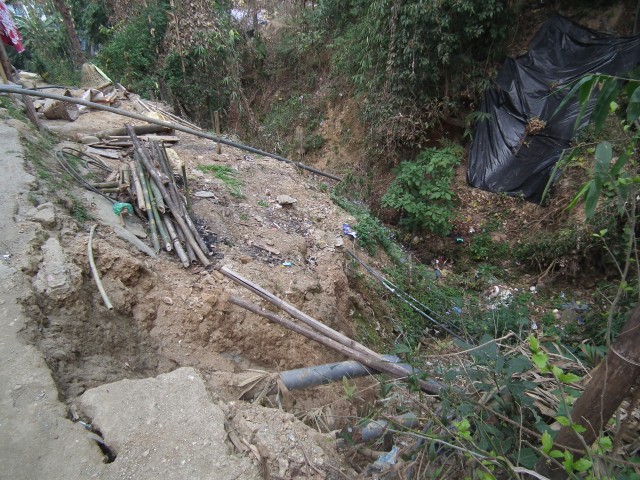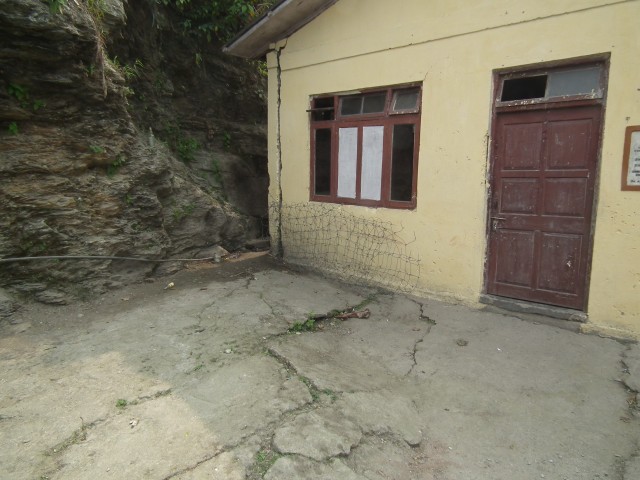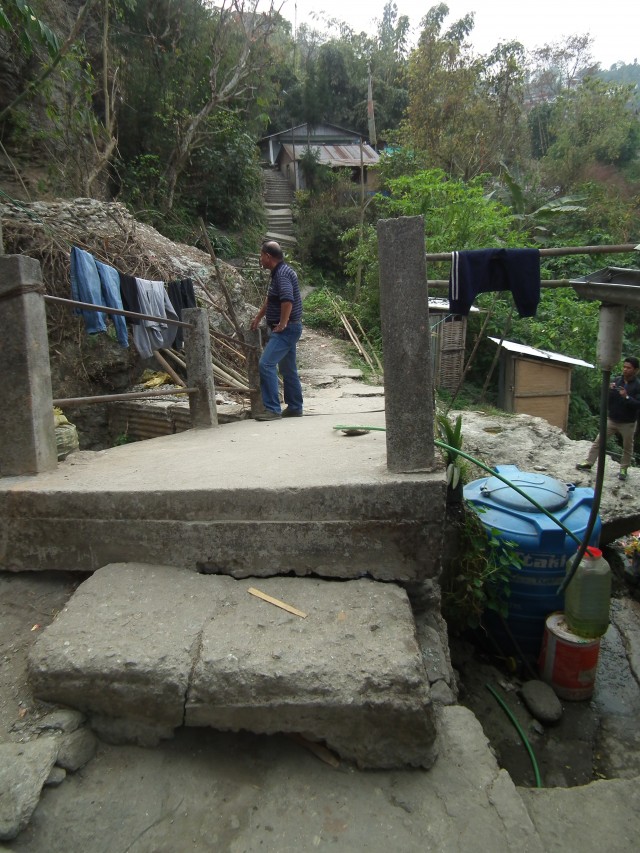14 March 2016
Managing urban landslides
Posted by Dave Petley
Managing urban landslides
On my last day in Kalimpong, Praful Rao of Save the Hills took me to visit an area of comparatively low wealth below the main town. This area, called Dumsi Pakha, provides a sad case study of the way that urban development in steep terrains can lead to landslide problems, with catastrophic outcomes for the inhabitants. This image gives an overview of the settlement, with large numbers of small houses sitting on the side of the steep hill. The challenge of managing urban landslides in such settings is clear:

Managing urban landslides: an overview of Dumsi Pakha
.
Landslides affect communities like this in multiple ways, but the two key elements that cause the problems are poor water management and slope disruption. As I noted in an earlier post in this sequence, water management in the town on the slopes above is a key factor. In Kalimpong town, water is discharged without any control into gulleys than run through Dumsi Pakha. This is one of those gulleys:

Managing urban landslides: a gully in Dumsi Pakha
.
The channel is of course dry towards the end of the dry season, and is choked with garbage. Note the extensive instability on the flanks of the channel in both the foreground and on the other side of the gully. This instability is being driven by the large flows that the channel now has to transport during the monsoon. These small landslides threaten many houses, whilst in some cases larger (but still not huge) slips are developing on the channel flanks. These have the potential to slip into the channel, briefly blocking it and then allowing a catastrophic debris flow to develop.
But elsewhere in the settlement the problems are more local. This house for example seems to have been built by first creating a bench by excavating into the slope:

Managing urban landslides: an unsupported cut slope in Dumsi Pakha
.
Note the boulders at the foot of the slope. This is a highly dangerous situation. It seems inevitable that this unsupported slope will, in time, collapse. There is a high chance that is in so doing it will cause severe damage to the house.
And then in other places there are cases of old landslides that have been reactivated by humans. This is the community centre, which was completed in 2002. There are very obvious signs of movement:

Managing urban landslides: the community centre at Dumsi Pakha
.
This deeper-seated movement is seen quite widely in Dumsi Pakha, although it is not ubiquitous. The clearest example is close to the community centre, where there is extensive movement occurring, bounded by the gully that I described above. The bridge across the gully is now extensively distorted, and the slope behind is moving quite extensively, as the steps behind Praful illustrate:

Managing urban landslides: extensive movement due to reactivattion of existing landslides
.
I think it is very important not to give the impression that the people living in Dumsi Pakha are passive victims of these problems. In many cases they are trying to manage the risk – for example they have built this retaining wall to try to stabilise a section of the slope that is particularly hazardous:

Managing urban landslides: a retaining wall constructed by local people
.
But the scale of the problems is so large that they cannot be solved alone. It is clear as to why people in these communities fear the monsoon so much; landslide accidents are inevitable in such settings without better management of the slopes. Dumsi Pakha is not exceptional or unusual – these types of problems are very commonplace.


 Dave Petley is the Vice-Chancellor of the University of Hull in the United Kingdom. His blog provides commentary and analysis of landslide events occurring worldwide, including the landslides themselves, latest research, and conferences and meetings.
Dave Petley is the Vice-Chancellor of the University of Hull in the United Kingdom. His blog provides commentary and analysis of landslide events occurring worldwide, including the landslides themselves, latest research, and conferences and meetings.